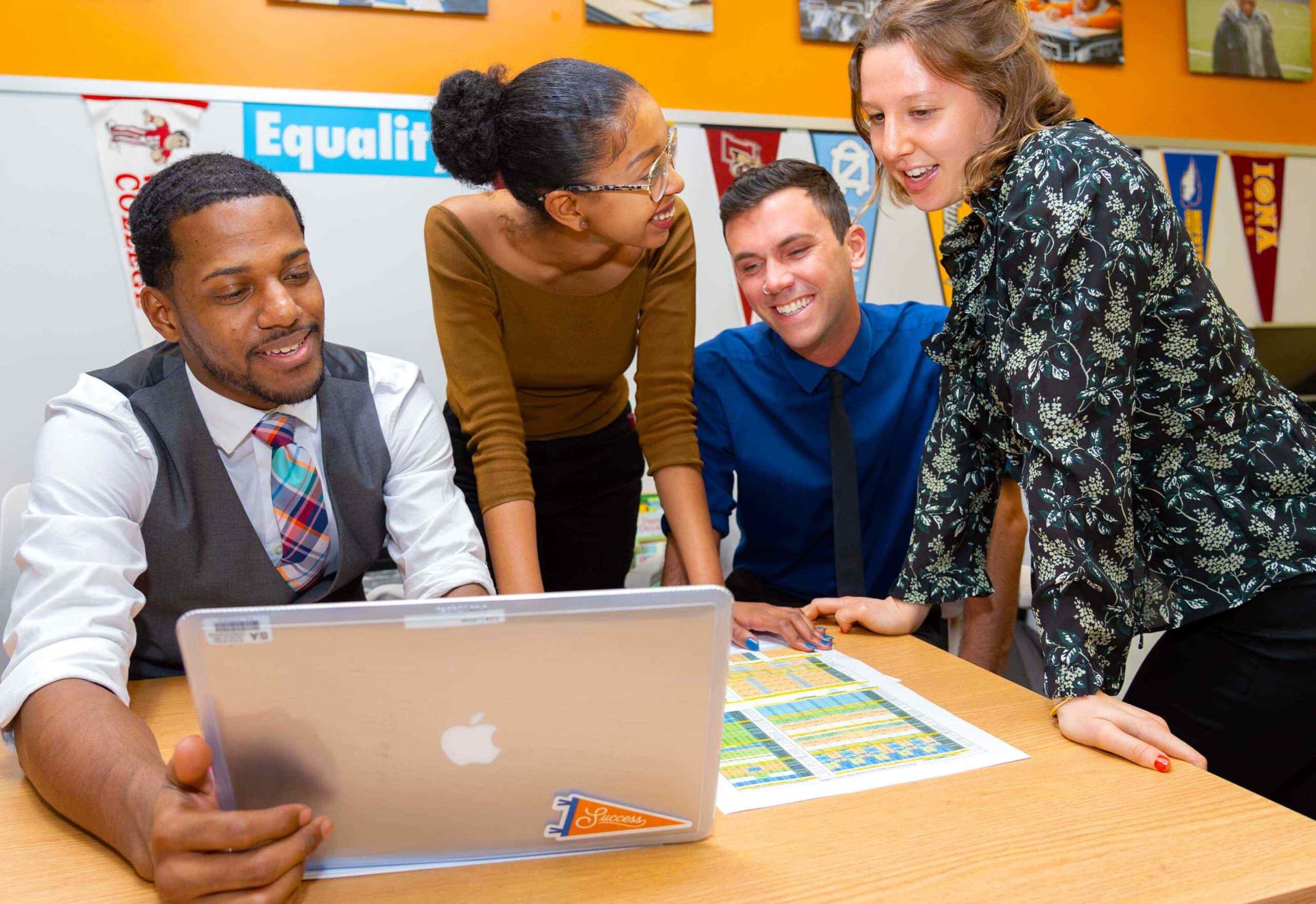Essential Question: Why did public opinion about the course and conduct of World War II change over time?
The first three lessons set the stage for the lead-up to the outbreak of World War II. The first lesson traces anti-Semitism over time to give scholars the background necessary to understand Hitler’s rise to power, which they will learn about in the second lesson. The third lesson addresses European appeasement to Hitler’s military aggression and how it ultimately failed and led to the outbreak of World War II. By the end of these three lessons, scholars will understand how World War II started and be prepared to examine opinions and experiences during World War II.
Lesson 1: Anti-Semitism (Video Analysis)
- Central Question: How did a history of anti-Semitism in Europe make the Holocaust possible?
Lesson 2: The Election of 1932 (Simulation)
- Central Question: Why did Germans vote for the Nazi Party?
Lesson 3: Nazi Aggression and Appeasement (Source Analysis)
- Central Question: Why did European leaders appease Nazi aggression?
Lessons 4 through 7 describe American actions and public opinions leading up to participation in World War II. Lessons 4 and 5 address arguments for and against American isolationism. Lesson 6 addresses the Japanese attack on Pearl Harbor, and Lesson 7 discusses one of the responses to this attack: the internment of Japanese Americans on the West Coast, for fear that they might commit another attack. By the end of Lesson 7, scholars will understand why the United States ultimately joined World War II despite its previous isolationist stance.
Lessons 4–5: American Isolationism (Source Analysis, Exit Ticket Revision)
- Central Question: To what extent did Americans support entry into World War II?
Lesson 6: U.S. Entry into World War II (Source Analysis)
- Central Question: Why did the United States join World War II?
Lesson 7: Japanese Internment (Source Analysis)
- Central Question: Why were Japanese Americans interned during World War II?
Lessons 8 and 9 describe the experience of soldiers on each front of the war, as well as the experience of Americans on the home front. By the end of Lesson 9, scholars will understand the geography of the war and how the war changed not only Europe but the United States as well.
Lesson 8: The Battlefield (Jigsaw)
- Central Question: To what extent were the experiences of soldiers on each front of World War II similar?
Lesson 9: American Home Front (Gallery Walk)
- Central Question: How did World War II affect American life on the home front?
Lessons 10 and 11 describe the atrocities of the Holocaust and the evolution of American opinions and responses to it. By the end of Lesson 11, scholars will have examined the consequences of anti-Semitism, both in Europe and the United States. Scholars will also be able to articulate the disconnect between American public opinion and action in response to the Holocaust. As a result of these lessons, scholars will understand the dire consequences of World War II for Jewish populations across Europe.
Lesson 10: The Holocaust (Source Analysis)
- Central Question: How did the Holocaust devastate the lives of people across Europe?
Lesson 11: U.S. Response to the Holocaust (Video Analysis)
- Central Question: How did the U.S. response to the Holocaust evolve over time?
Lessons 12 through 14 explain the end of the war in both Europe and the Pacific. Lesson 12 describes the major battles that ended the war in Europe, while Lessons 13 and 14 evaluate the American decision to drop the atomic bomb, ending the war in the Pacific and, thus, World War II. By the end of Lesson 14, scholars will understand why the Allies prevailed and will be able to articulate the consequences of an Allied victory, both in Europe and in the Pacific.
Lesson 12: The Fall of the Nazis (Gallery Walk)
- Central Question: How did the Allies defeat the Nazis?
Lessons 13–14: The Atomic Bomb (Debate, Exit Ticket Revision)
- Central Question: Should the United States have dropped the atomic bomb on Japan?
